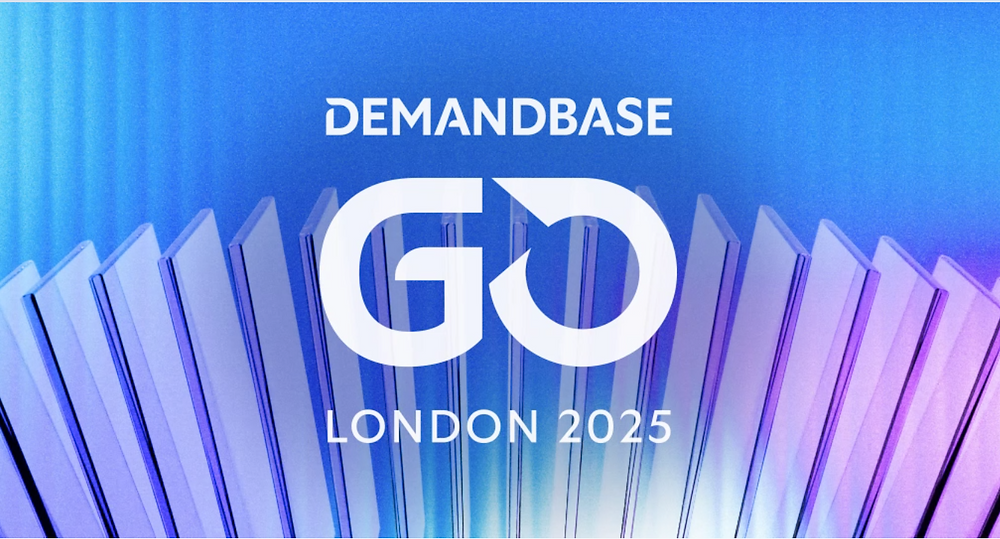
What we learned at Demandbase GO 2025: ABM, AI, and the future of GTM
Members of the Sojourn Solutions team had the opportunity to attend Demandbase GO in London on April 30, 2025. The event was a deep dive into the next evolution of Account-Based Marketing (ABM), the rise of agentic AI, and the reality of executing a go-to-market (GTM) strategy in today’s fragmented, buyer-centric world.
Here are our key takeaways from the event:
ABM is growing up - and getting smarter
80% of businesses say ABM has helped increase revenue. But as we heard throughout the day, ABM isn't just a set of tactics - it's becoming the backbone of modern GTM. The message was clear: ABM must be flexible, cross-functional, and data-driven.
Key points:
ABM has moved through four phases: from basic targeting to intent-driven, platform-enabled, and now toward integrated orchestration with open APIs and AI agents.
Buying groups—not individual leads—are now the primary focus. Demandbase reported a 65% CTR and 2.6X deal size when targeting entire buying committees.
First-party data and integration across the stack (CRM, MAP, CDP, etc.) are essential to keep everything aligned and measurable.
Agentic AI is coming fast - and it’s not optional
AI took center stage, with a major shift in tone: it’s no longer about using AI tools - it’s about designing your GTM strategy around AI teammates.
What we heard:
Demandbase is rolling out a system of connected AI agents to help execute GTM tasks autonomously—starting with campaign optimization, insights generation, and buying group engagement.
ForgeX highlighted that the biggest blocker to AI isn’t tech—it’s lack of expertise. Most teams are stuck in pilot mode and need support moving to orchestration.
The future lies in “agentic execution”—AI that goes from objectives to tasks to outcomes, embedded across teams and platforms.
A striking stat: 91% of companies are using AI in their ABM, but only 19% have a roadmap.
Buying journeys are fragmented - and marketers must adapt
Today’s B2B buying journey is nonlinear, self-directed, and increasingly digital. Sessions emphasized the need for a “Help your buyer buy” mindset.
What that looks like:
Buyers now shortlist 2–3 vendors, not 5–6, and often delay human interaction until late in the cycle.
Content needs to serve like your best salesperson: relevant, timely, and value-driven.
Personalization at scale is critical—especially in creative and ad targeting.
Metrics that matter now:
Funnel velocity
Engagement by buying group
Account reach and territory health
Early pipeline indicators like attention and active usage
Ops and data are still the bottlenecks - but solvable ones
Several sessions - and customer panels from Xero, Randstad, and The Access Group - spoke candidly about operational challenges. Themes included:
The myth that ABM is “just a tech solution” instead of a GTM strategy.
The importance of small wins and clear ICPs to get stakeholder buy-in.
Integration is hard—but doesn’t require a monolith. Instead, bring the best from each tool, connect via API, and use AI to bridge the gaps.
Pro tip: Don’t try to boil the ocean. Start small, prove value, and scale with shared goals between sales and marketing.
What we’re taking back to our Clients
As a team that works every day in Marketing Ops and GTM execution, here’s how we’re applying the learnings:
✅ Start with a clear ICP and buying group strategy - and communicate it relentlessly.
✅ Invest in AI - but not without a roadmap. Train your team, define objectives, and map real use cases.
✅ Treat ABM as a GTM operating system, not a campaign type.
✅ Build integration bridges, not silos. API-first thinking will help you scale.
✅ Make content work harder. Use AI to personalize and deliver value at every stage of the journey.
Final thought: ABM isn’t dead - it’s being reborn
If Demandbase GO showed us anything, it’s that ABM isn’t an island anymore. It’s becoming the unifying force that brings sales, marketing, ops, and AI into one coordinated motion.
As one speaker put it: “Agentic AI will be more disruptive than the internet.” That’s a bold claim. But if what we saw at GO is any sign, they might just be right.






